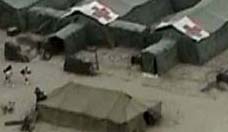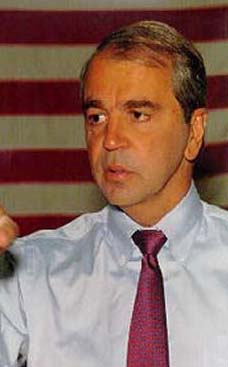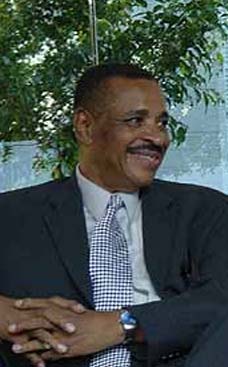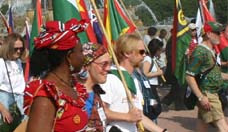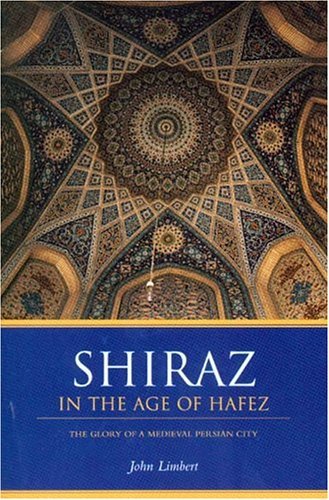
The author, John Limbert, is former US Ambassador to Mauritania (2000-2003), and like many American academics, first became interested in Iran through a stint there as a Peace Corps volunteer (1964-1966). Limbert went back a few years later to teach English (1969-72) and undertake the research for this book, which was submitted as a Harvard Ph.D. thesis in 1974. It emerges at this date, from what seems a scholarly time capsule, an intellectual memento of a happier era in Iranian-American relations, inspired by the author's obvious love of the city, and based upon "the premise that a city which could produce a poet of Hafez's stature in a period of political instability deserves study on its own merits"
Iran RPCV John Limbert writes "Shiraz in the Age of Hafez: The Glory of a Medieval Persian City"
Shiraz in the Age of Hafez: The Glory of a Medieval Persian City
Jul 1, 2005 - Middle East Journal
PRE-20TH CENTURY HISTORY Shiraz in the Age of Hafez: The Glory of a Medieval Persian City, by John Limbert. Seattle, WA: University of Washington Press, 2004. xii + 124 pages. Appends, to p. 141. Notes to p. 162. Bibl. to p. 172. Index to p. 182. $22.50 paper.
In 1960, Arthur Arberry wrote Shiraz: Persian City of Saints and Poets (Oklahoma University Press), which he believed to be "the first attempt outside Persia to write a history of Shiraz, and the first attempt anywhere to interpret the history of Shiraz." It seems most appropriate, given the strong faculty and student exchange programs of the 1960s and 1970s between Shiraz University (then Pahlavi University, and its Asia Institute) and various universities in the United States (Kent State and the University of Pennsylvania, among others), that an American who once taught at Shiraz provides us with the second English-language monograph on that city.
The author, John Limbert, is former US Ambassador to Mauritania (2000-2003), and like many American academics, first became interested in Iran through a stint there as a Peace Corps volunteer (1964-1966). Limbert went back a few years later to teach English (1969-72) and undertake the research for this book, which was submitted as a Harvard Ph.D. thesis in 1974. It emerges at this date, from what seems a scholarly time capsule, an intellectual memento of a happier era in Iranian-American relations, inspired by the author's obvious love of the city, and based upon "the premise that a city which could produce a poet of Hafez's stature in a period of political instability deserves study on its own merits" (p.
124). Remarkably, Limbert's subsequent experience in Iran, as one of the American hostages held from November 4, 1979 to January 21, 1981, seems in no way to have marred his enthusiasm for and interest in Shiraz.
The book assembles and collates a great deal of very useful background information about the patrician families and the social structure of 14th-century Shiraz from a variety of sources. It draws extensively upon primary and secondary sources published in Persian and English, including about a half-dozen secondary studies in English from the 1990s. It is divided into two parts, focusing first on the political history of the city, in three chapters: "History of Shiraz to the Mongol Conquest" (chapter 1), Shiraz during the Mongol period through the mid14th century (chapter 2), and "Shiraz as CityState: the Reign of Abu Eshaq Inju and the Mozaffarids" (chapter 3).
The second, and most interesting part of the book (chapters 4- 6), focuses on the demographics, urban topography, physical structures, economy and sources of revenue, patrician families, and social and religious institutions of the city. The plentiful charts, tables, and appendices, which detail the genealogies, neighborhoods, mosques, seminaries, chief judges, naqibs, (leaders of the sayyeds), patrician families and dynasties, etc., provide a particularly useful reference tool.
Typographical errors are few (e.g., qazi al-gozat, 83 and 87; Sajadi should have a geminated "j" 158, 169; Beiza'I, 85 [this latter due to a most irksome "AutoCorrect" feature in Microsoft Word], etc.). The publishers are to be commended for including the quotations of Persian verse in the original script, even if the verses do not always line up evenly or center correctly on the page (e.g., p. 86). The edition of the Frsnmeh-ye-Nseri of Fas'i cited in the bibliography (p. 166) is lamented as being in need of a careful modern critical edition; fortunately this desideratum has been provided by Mansur Rastgr Fas'i in a 2-volume critical edition (Tehran: Amir Kabir 1988, repr.
1999).
While the poet Hafez is not the focus of the study, the work will assist literary scholars attempting to better understand the socio- political context in which that most iconic of Iranian poets wrote (as well, of course, as Kh^sup w^ju-ye Kermni, Obayd-e Zkni, Jahn Malik Khtun, and other 14thcentury Shirazi literary figures). Limbert memorably describes Shiraz at this time as a "combination of Athens, Dodge City, the Vatican and Sodom and Gomorrah" (p. 121), though the picture we get is - despite the reconstruction of institutional and familial relations - not as cinematically vivid as all that.
The sources do not give us as much specific information as we would hope, in part because their authors tend to flatten detail into the literary mold of expected typologies, and omit the kind of material that would illuminate private life or the life of non- elites. Extracting information from such sources does not therefore lead to a "thick" description of the society or events. Nevertheless, the amount of specific detail amassed here will assist other researchers interested in Shiraz. Much of the information Limbert gives about the structure of Shirazi society in the 13th and 14th centuries, such as the division of patrician families into two tiers of political elites and local aristocracy (p.
93), or the wielding of authority in persona, via charisma and social standing, rather than ex cathedra (p. 96), etc., will apply in some degree to other medieval Iranian cities, as well. This book should therefore prove useful to those with a wider interest in Islamic cities and urban social structures, with the caveat that, as Limbert suggests (p. 101ff. and pp. 121-24), the particular importance of saints and their shrines for Shiraz, as well as its relative "remoteness from the Mongol invasions" did shape the particular politics and local economy of the city, along with its special culture of piety and pilgrimage.
Franklin Lewis, Associate Professor of Persian, University of Chicago
Copyright Middle East Institute Summer 2005






